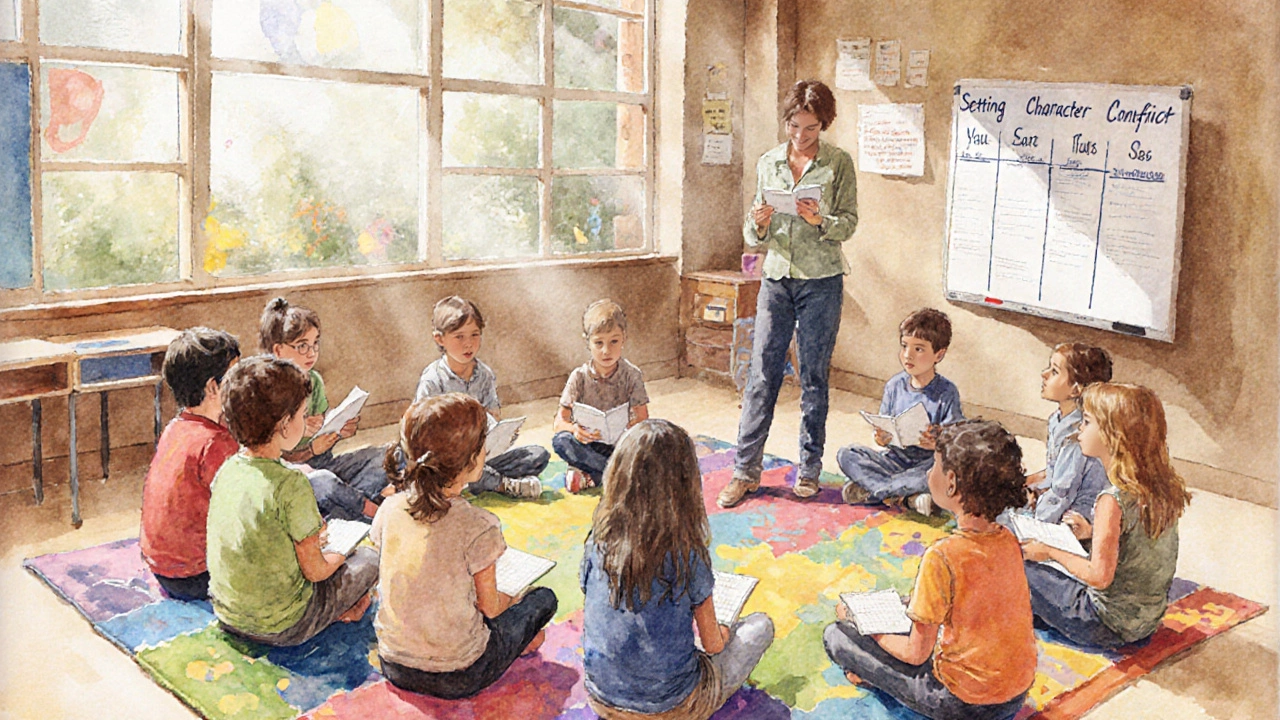Story Ideas for 12‑Year‑Olds: What to Write About?
 Oct, 8 2025
Oct, 8 2025
If you're looking for story ideas for 12 year olds, you’ve landed in the right spot. Pre‑teens are bursting with imagination, but they often need a nudge to turn that spark into a full‑blown tale. This guide breaks down the most compelling themes, gives ready‑to‑use prompts, and shares practical tips so a 12‑year‑old can write with confidence.
Why a Good Prompt Matters
A solid prompt works like a map for a young writer. It sets the stage, hints at conflict, and leaves room for personal twists. Research in child development shows that structured creativity improves narrative skills and boosts self‑esteem. In other words, a tidy prompt isn’t limiting-it’s empowering.
Top Themes That Capture Pre‑Teen Hearts
Below are the seven themes that consistently resonate with kids aged 10‑14. Each theme is linked to an entity you’ll see later in the article.
- Friendship adventures - stories about pals overcoming obstacles together.
- Mystery quests - clues, hidden rooms, and a detective‑like kid hero.
- Fantasy realms - dragons, magic schools, and secret portals.
- Science‑fiction explorations - space missions, time travel, robots with personality.
- Coming‑of‑age journeys - dealing with change, identity, and new responsibilities.
- Adventure travel - treasure hunts, lost islands, or urban hide‑and‑seek.
- Historical ‘what‑ifs’ - re‑imagining famous events from a kid’s perspective.
Quick‑Pick Prompt List
Use any of these starters as the first line of a story, or adapt them to fit a different genre.
- "When I slipped behind the old library shelf, I discovered a door that led to a city made of clouds."
- "My best friend vanished during recess, leaving behind a single, sparkling feather."
- "The robot in my science class started asking me riddles about the future."
- "I found a diary in the attic that claimed a pirate treasure is buried beneath our school gym."
- "The new kid in town says he can talk to cats, and tonight the cats are planning a protest."
How to Flesh Out a Prompt
Turning a one‑sentence idea into a full story involves three simple steps: setting, character, and conflict.
- Setting: Describe where the action happens. Is it a bustling market in a fantasy kingdom or a quiet suburb with a secret basement? Give sensory details-what does the air smell like? What sounds are in the background?
- Character: Give the protagonist a clear goal and a flaw. A 12‑year‑old hero might want to prove themselves brave, but they also fear failure.
- Conflict: Introduce a problem that blocks the goal. It could be a rival, a magical curse, or an internal doubt. The conflict should raise the stakes and keep readers turning pages.
Here’s a mini‑example using Prompt #2:
Setting: The schoolyard, rain‑slicked and echoing with distant thunder.
Character: Maya, an eager illustrator who hides her worry about moving to a new town.
Conflict: The feather belongs to a shy classmate who claims it’s the key to a hidden garden. Maya must decide whether to help, risking her secret.

Genre‑Specific Tips
Each genre has a set of conventions that help young writers meet reader expectations while still being original.
| Genre | Typical Elements | Suggested Twist |
|---|---|---|
| Fantasy | Magic systems, mythical creatures, quests | Magic is powered by everyday emotions like laughter. |
| Mystery | Clues, red herrings, detective work | The culprit is an unexpected ally, like a pet. |
| Science‑Fiction | Technology, space travel, future societies | The AI companion learns to dream. |
| Adventure | Treasure maps, physical challenges, teamwork | The treasure turns out to be a forgotten family recipe. |
| Coming‑of‑Age | Personal growth, friendships, first responsibilities | The protagonist discovers a hidden talent that changes their future path. |
Character Development Tricks for Kids
Even a short story benefits from characters that feel real. Try these quick tricks:
- Give a nickname that reveals something about the character (“Sparky” for a curious kid).
- List three favorite hobbies-use one as a plot device.
- Write a short diary entry from the character’s point of view before the story starts. It surfaces voice and attitude.
Common Pitfalls and How to Dodge Them
Young writers often stumble into a few traps. Spot them early and adjust.
- Too many characters. Keep the cast to 3‑4 main players; extra figures can be introduced later.
- Flat settings. Add one vivid detail per scene-what’s the lighting? A smell? This grounds the reader.
- Ending too fast. Aim for a climax, then a brief resolution that shows how the protagonist changed.
- Over‑reliance on dialogue. Mix dialogue with action and inner thoughts to keep the pace varied.

Resources for Young Writers
Below are tools and books that help flesh out ideas and polish drafts.
- Storybird - an online platform where kids pick artwork and write stories around it.
- The Writer’s Toolbox for Kids by Lisa Rojany - practical exercises for plot and character.
- Local library’s writing clubs - many UK libraries (including Bristol’s Central Library) host weekly sessions for pre‑teens.
- Scrivener’s free “Kids” template - a simple outline that guides the writing process.
Putting It All Together: A Mini‑Workshop Plan
Want an easy classroom or at‑home activity? Follow this 45‑minute outline.
- Warm‑up (5 min): Share one favorite book and identify its main theme.
- Prompt selection (5 min): Each student picks a prompt from the list above.
- Brainstorm (10 min): Use a three‑column chart - Setting, Character, Conflict - to flesh out the prompt.
- Write (15 min): Draft the opening paragraph incorporating the three elements.
- Share (10 min): Volunteers read aloud; peers give one positive comment and one suggestion.
This structure turns vague curiosity into concrete practice, and the quick feedback loop keeps motivation high.
Frequently Asked Questions
What age is appropriate for these story ideas?
The prompts are geared toward 10‑ to 14‑year‑olds, with a sweet spot around 12. Younger kids can simplify the plots, while older pre‑teens can add more layers.
How many pages should a 12‑year‑old aim for?
A good starter length is 2‑5 pages (about 500‑1,200 words). It’s enough to explore a plot without feeling overwhelming.
Can I mix genres in one story?
Absolutely. A mystery set in a fantasy world, or a coming‑of‑age adventure with sci‑fi tech, can keep things fresh. Just make sure the core conflict stays clear.
What tools help with editing?
Reading the story aloud, using free grammar checkers like Grammarly, and getting a peer or adult to review are all effective. Focus first on story flow, then on spelling and punctuation.
How can I stay motivated to finish a story?
Set small goals - finish the opening, then the middle, then the ending. Celebrate each milestone with a short break or a favorite snack.